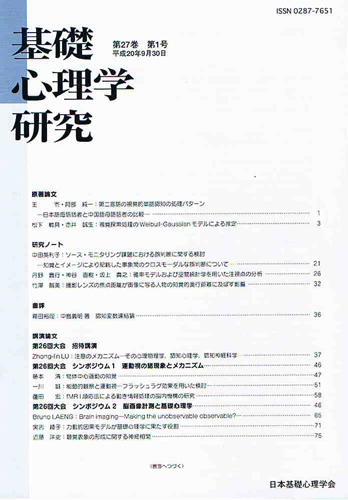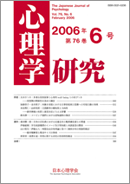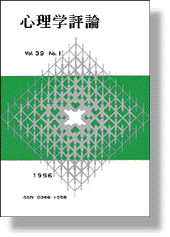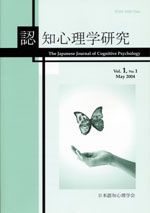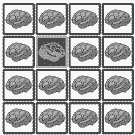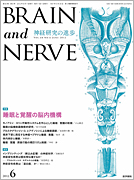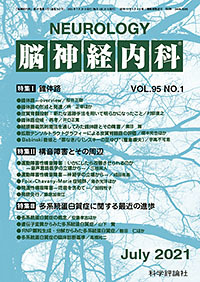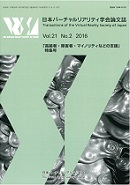学術誌別・掲載学術論文一覧
以下に取り上げるのは、2002年以降に掲載もしくは今後掲載予定の主な学術論文の掲載学術誌別一覧です。(主な学術論文の年代別一覧はこちら)
なお、学術誌の掲載順はインパクト ファクター (Impact Factor)に基づいています。各学術誌名の後のIFはインパクト ファクターを表しますが、異分野間の比較は難しいものの、例えば心理 学分野内での相対比較は可能なので、日本心理学会が発行する英論文誌Japanese Psychological ResearchのIF:0.830が比較参考値になるかも しれません。さらに、分野毎に学術誌のランキングを算出し、上位25%の学術誌(Top 25% Journal)以上となる学術誌を、分野横断的に一流学術誌とみなすことが多くなっています。但し、専門性の高い学術論文誌のインパクト ファクターは一般に高くなりにくいのですが、それは論文レベルが低い学術論文誌を意味するわけで はないので、注意が必要だと思います。
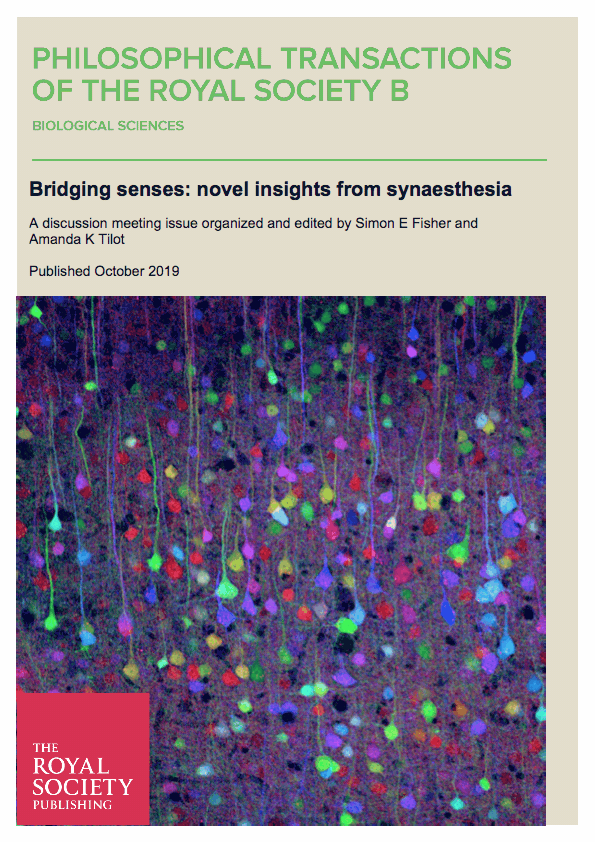 Philosophical
Transaction of The Royal Society
B (IF:6.090/2020, Top 10% Journal)
Philosophical
Transaction of The Royal Society
B (IF:6.090/2020, Top 10% Journal)
M. Asano, S. Takahashi, T. Tsushiro, & K. Yokosawa (2019). Synaesthetic
colour associations for Japanese Kanji characters: From
the perspective of grapheme learning, Philosophical
Transaction of The Royal Society
B, 374: 20180349.
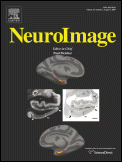 NeuroImage
(IF:5.880/2020, Top 10% Journal)
NeuroImage
(IF:5.880/2020, Top 10% Journal)
Y. Makino, K. Yokosawa, Y. Takeda & T. Kumada (2004). Visual search and memory search engage extensive overlapping cerebral cortices: An fMRI study. NeuroImage, 23, 525-533.
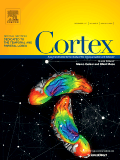 Cortex
(IF:4.340/2020, Top 25% Journal)
Cortex
(IF:4.340/2020, Top 25% Journal)
N. B. Root, R. Rouw, M. Asano, C.-Y. Kim, H. Melero, K. Yokosawa, & V. S. Ramachandran (2018). Why is the synesthete's "A" red? Using a five-language dataset to disentangle the effects of shape, sound, semantics, and ordinality on inducer-concurrent relationships in grapheme-color synesthesia, Cortex, 99, 375-389.
 Scientific Reports
(IF:4.120/2020, Top 25% Journal)
Scientific Reports
(IF:4.120/2020, Top 25% Journal)
K. Uno & K. Yokosawa (2022). Cross-modal correspondence between auditory pitch and visual elevation modulates audiovisual temporal recalibration, Scientific Reports, https://doi.org/10.1038/s41598-022-25614-3.
K. Uno & K. Yokosawa (2020). Apparent physical brightness
of graphemes is altered by their synaesthetic colour in grapheme-colour
synaesthetes Scientific Reports, 10:20134. DOI:10.1038/s41598-020-77298-2
Q. Li, R. Nakashima, & K. Yokosawa (2018). Task-irrelevant spatial dividers facilitate counting
and numerosity estimation, Scientific Reports, 8:15620.
DOI:10.1038/s41598-018-33877-y
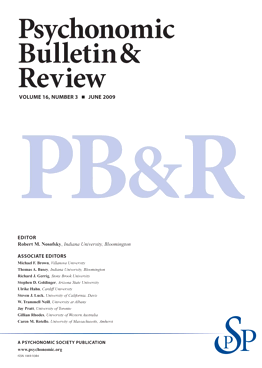 Psychonomic
Bulletin & Review (IF:
3.640/2020, Top 25% Journal)
Psychonomic
Bulletin & Review (IF:
3.640/2020, Top 25% Journal)
K. Uno, M. Asano, H. Kadowaki, & K. Yokosawa (2020). Grapheme-color associations can transfer to novel
graphemes when
synesthetic colors function as grapheme “discriminating markers", Psychonomic
Bulletin & Review., 27, 4, 700-706.
R. Nakashima & K. Yokosawa (2011). Does scene context always facilitate retrieval of visual object representations?, Psychonomic Bulletin & Review, 18, 2, 309-315.
S. Kanaya & K. Yokosawa (2011). Perceptual congruency of audio-visual speech affects ventriloquism with bilateral visual stimuli, Psychonomic Bulletin & Review, 18, 1, 123-128.
A. Nishimura & K. Yokosawa (2009). Effects of laterality and pitch height of an auditory accessory stimulus on horizontal response selection: The Simon effect and the SMARC effect. Psychonomic Bulletin & Review, 16, 4, 666-670.
R. Niimi & K. Yokosawa (2009a). Three-quarter views are subjectively good because object orientation is uncertain. Psychonomic Bulletin & Review, 16, 2, 289-294.
R. Niimi & K. Yokosawa (2008). Determining the orientation of depth-rotated familiar objects. Psychonomic Bulletin & Review, 15, 1, 208-214.
 Frontiers
in Human Neuroscience (IF:3.000/2020, Top 25% Journal)
Frontiers
in Human Neuroscience (IF:3.000/2020, Top 25% Journal)
M. Asano & K. Yokosawa (2013). Grapheme learning and grapheme-color synesthesia: Toward a comprehensive model of grapheme-color association, Frontiers in Human Neuroscience, 7:757. DOI: 10.3389/fnhum.2013.00757
 PLOS ONE
(IF:2.870/2020, Top 25% Journal)
PLOS ONE
(IF:2.870/2020, Top 25% Journal)
D. Mine, N. Ogawa, T. Narumi, & K. Yokosawa (2020). The relationship between the body and the environment in the virtual world: The interpupillary distance affects the body size perception. PLOS ONE 15(4): e0232290.
S. Kanaya, Y. Matsushima, & K. Yokosawa (2012). Does Seeing Ice Really Feel Cold? Visual-Thermal Interaction under an Illusory Body-Ownership, PLoS ONE, 7(11): e47293. DOI:10.1371/journal.pone.0047293
Psychological
Research (IF2.650/2020, Top 25% Journal)
K. Nonose, R. Niimi, & K. Yokosawa (2016). On the three-quarter view advantage of familiar object recognition, Psychological Research, 80, 6, 1030-1048.
R. Nakashima, C. Watanabe, E. Maeda, T. Yoshikawa, I. Matsuda, S. Miki, & K. Yokosawa (2015). The effect of expert knowledge on medical search: Medical experts have specialized abilities for detecting serious lesions, Psychological Research, 79, 5, 729-738.
A. Nishimura & K. Yokosawa (2010a). Effector identity and orthogonal stimulus-response compatibility in blindness to response-compatible stimuli. Psychological Research, 74, 2, 172-181.
R. Niimi, K. Watanabe, & K. Yokosawa (2008). The dynamic-stimulus advantage of visual symmetry perception. Psychological Research, 72, 5, 567-579.
A. Ariga & K. Yokosawa (2008). Attentional awakening: Gradual modulation of temporal attention in rapid serial visual presentation. Psychological Research, 72, 2, 192-202.
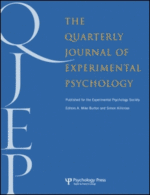 Quarterly Journal of Experimental Psychology
(IF:2.580/2020, Top 25% Journal)
Quarterly Journal of Experimental Psychology
(IF:2.580/2020, Top 25% Journal)
J. Nagai, K. Yokosawa, & M. Asano (2016). Biases and regularities of grapheme-colour associations in Japanese nonsynaesthetic population, Quarterly Journal of Experimental Psychology, 69, 1, 11-23.
A. Nishimura & K. Yokosawa (2012). Effects of Visual Cue and Response Assignment on Spatial Stimulus Coding in Stimulus-Response Compatibility. Quarterly Journal of Experimental Psychology, 65, 1, 55-72.
A. Nishimura & K. Yokosawa (2010b). Response-specifying cue for action interferes with perception of feature-sharing stimuli. Quarterly Journal of Experimental Psychology, 63, 6, 1150-1167.
A. Nishimura & K. Yokosawa (2006). Orthogonal S-R compatibility effects emerge even when the stimulus position is irrelevant. Quarterly Journal of Experimental Psychology 59, 6, 1021-1032.
 Frontiers in Psychology (IF:2.390/2018, Top 25%
Journal)
Frontiers in Psychology (IF:2.390/2018, Top 25%
Journal)
E. Matsuda, Y. Okazaki, M. Asano, K. Yokosawa (2018). Developmental Changes in Number Personification by Elementary School Children, Frontiers in Psychology, 9:2214, DOI:10.3389/fpsyg.2018.02214
R. Nakashima, Y. Komori, E. Maeda, T. Yoshikawa, & K. Yokosawa (2016). Temporal Characteristics of Radiologists' and Novices' Lesion Detection in Viewing Medical Images Presented Rapidly and Sequentially, Frontiers in Psychology, 7:1553, DOI: 10.3389/fpsyg.2016.01553
C. Ishiguro, K. Yoksoawa, & T. Okada (2016). Eye movements during art appreciation by students taking a photo creation course, Frontiers in Psychology, 7:1074, DOI: 10.3389/fpsyg.2016.01074
R, Nakashima, K. Kobayashi, E. Maeda, T. Yoshikawa, & K. Yokosawa (2013). Visual search of experts in medical image reading: The effect of training, target prevalence, and expert knowledge, Frontiers in Psychology, 4:166. DOI: 10.3389/fpsyg.2013.00166.
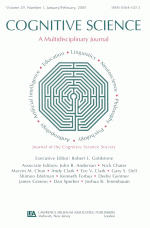 Cognitive Science (IF:2.330/2020, Top 25% Journal)
Cognitive Science (IF:2.330/2020, Top 25% Journal)
K. Yokosawa, K. B. Schloss, M. Asano,
& S. E. Palmer (2016). Ecological Effects in Cross-Cultural Differences
between US and
Japanese Color Preferences, Cognitive Science, 40, 7, 1590–1616.
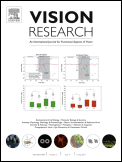 Vision Research (IF:2.300/2020, Top 25% Journal)
Vision Research (IF:2.300/2020, Top 25% Journal)
T. Takeuchi, K. Yokosawa, & K.K. De Valois (2004). Texture segregation by motion under low luminance levels. Vision Research, 44, 2, 157-166.
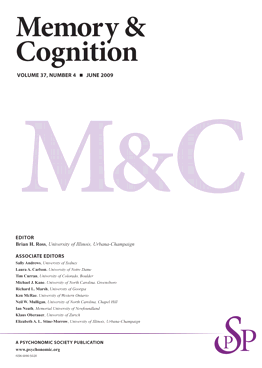 Memory
& Cognition (IF:2.290/2020, Top 25% Journal)
Memory
& Cognition (IF:2.290/2020, Top 25% Journal)
J. Nagai & K. Yokosawa (2003). Negative priming and stimulus familiarity: What causes opposite results? Memory & Cognition, 31, 3, 369-379.
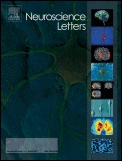 Neuroscience
Letters (IF:2.160/2020)
Neuroscience
Letters (IF:2.160/2020)
R. Niimi, A. Saneyoshi, R. Abe, T. Kaminaga, & K. Yokosawa (2011). Parietal and frontal object areas underlie perception of object orientation in depth, Neuroscience Letters, 496, 35-39.
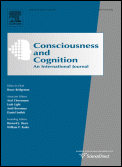 Consciousness and Cognition (IF:2.110/2020, Top
25% Journal)
Consciousness and Cognition (IF:2.110/2020, Top
25% Journal)
N. B. Root, M. Asano, H. Melero, C.-Y. Kim, A. V. Sidoroff-Dorso, A. Vatakis, K. Yokosawa, V. S. Ramachandran, & R. Rouw (2021). Do the colors of your letters depend on your language? Language-dependent and universal influences on grapheme-color synesthesia in seven languages, Consciousness and Cognition.
L. Okubo, K. Yokosawa, M. Sawayama, & T. Kawabe (2021). Discounting mechanism underlies extinction illusion,Consciousness and Cognition.
K. Uno, M. Asano, & K. Yokosawa (2021). Consistency of synesthetic association varies with grapheme familiarity: A longitudinal study of grapheme-color synesthesia,Consciousness and Cognition.
M. Asano & K. Yokosawa (2012). Synesthetic colors for Japanese late acquired graphemes, Consciousness and Cognition, 21, 2, 983-993.
M. Asano & K. Yokosawa (2011b). Synesthetic colors are elicited by sound quality in Japanese synesthetes, Consciousness and Cognition, 20, 4, 1816-1823.
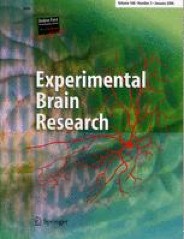 Experimental Brain Research (IF:1.950/2020)
Experimental Brain Research (IF:1.950/2020)
D. Mine & K. Yoksoawa (in press). Does response facilitation to visuo-tactile stimuli around remote-controlled hand avatar reflect peripersonal space or attentional bias? Experimental Brain Research.
D. Mine & K. Yokosawa (2021). Disconnected hand avatar can be integrated into the peripersonal space, Experimental Brain Research, 239, 1, 237-244.
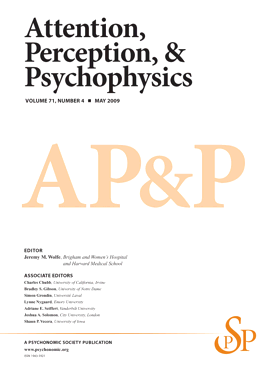 Attention,
Perception & Psychophysics
(IF:1.900/2020, Top 25% Journal)
Attention,
Perception & Psychophysics
(IF:1.900/2020, Top 25% Journal)
K. Uno & K. Yokosawa (2022). Pitch-elevation and pitch-size crossmodal correspondences do not affect temporal ventriloquism, Attention, Perception & Psychophysics.
D. Mine & K. Yokosawa (2021). Adaptation to delayed visual feedback of the body movement extends multi-sensory peripersonal space, Attention, Perception & Psychophysics.
D. Mine & K. Yokosawa (2021). Remote hand: Hand-centered peripersonal space transfers to a disconnected hand avatar, Attention, Perception & Psychophysics, 83, 3250-3258..
G. Sastyin, R. Niimi, & K. Yokosawa (2015). Does object view influence the scene consistency effect?, Attention, Perception & Psychophysics, 77, 3, 856-866.
R. Nakashima & K. Yokosawa (2013). Visual search in divided areas: Dividers initially interfere with and later facilitate visual search, Attention, Perception & Psychophysics, 75, 2, 299-307.
A. Nishimura & K. Yokosawa (2010c). Visual and auditory accessory stimulus offset and the Simon effect. Attention, Perception & Psychophysics. 72 1965-1974.
A. Ariga & K. Yokosawa (2008). Contingent attentional capture occurs by activated target congruence. Perception & Psychophysics, 70, 4, 680-687.
A. Nishimura & K. Yokosawa (2007). Preparation for horizontal or vertical dimensions affects the right-left prevalence effect. Perception & Psychophysics, 69, 7, 1242-1252.
R. Niimi, K. Yokosawa, & K. Watanabe (2006). Attentional set for axis of symmetry in symmetry-defined visual search. Perception & Psychophysics, 68, 7, 1153-1162.
 Journal of Vision (IF:1.830/2020, Top 25% Journal)
Journal of Vision (IF:1.830/2020, Top 25% Journal)
L. Okubo & K. Yokosawa (in press). Attentional allocation and the pan-field color illusion, Journal
of Vision.
W. Yamashita, R. Niimi, S. Kanazawa, M. Yamaguchi K., & K. Yokosawa (2014). Three-quarter view preference for three-dimensional objects in 8-month-old infants, Journal of Vision, 14(4), 5, 1-10. doi:10.1167/14.4.5
K. Yokosawa & H. Mitsumatsu (2003). Does disruption of a scene impair change detection? Journal of Vision, 3, 1, 41-48.
 SpringerPlus (IF:1.780/2020)
SpringerPlus (IF:1.780/2020)
E. Maeda, T. Yoshikawa, R. Nakashima, K. Kobayashi, K. Yokosawa, N. Hayashi, Y. Masutani, N. Yoshioka, M. Akahane & K. Ohtomo (2013). Experimental system for measurement of radiologists' performance by visual search task, SpringerPlus, 2:607. DOI: 10.1186/10.1186/2193-1801-2-607
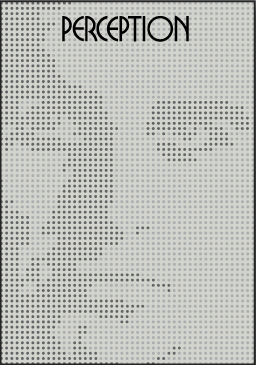 Perception (IF:1.470/2020, Top 25% Journal)
Perception (IF:1.470/2020, Top 25% Journal)
S. Kanaya, W. Fujisaki, S. Nishida, S. Furukawa, & K. Yokosawa (2015). Effects of frequency separation and diotic/dichotic presentations on the alternation frequency limits in audition derived from a temporal phase discrimination task, Perception, 44, 2, 198–214.
R. Niimi & K. Yokosawa (2009b). Viewpoint dependency in the recognition of non-elongated familiar objects: Testing the effects of symmetry, front-back axis, and familiarity. Perception, 38, 4, 533-551.
M. Suganuma & K. Yokosawa (2006). Grouping and trajectory storage in multiple object tracking: Impairments due to common item motion. Perception, 35, 483-495. [demo]
H. Mitsumatsu & K. Yokosawa (2003). Efficient extrapolation of the view using the dynamic and predictive stimulus. Perception, 32, 8, 969-983.
H. Mitsumatsu & K. Yokosawa (2002). How does the internal detail of the object contribute to recognition? Perception 31, 11, 1289-1298.
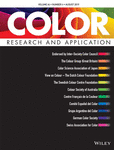 Color
Research and Application
(IF:1.300/2020)
Color
Research and Application
(IF:1.300/2020)
E. Kumakura, K. Schmid, K. Yokosawa, & A. Werner (2019). Subjective evaluation of natural high-saturated images on a wide gamut display, Color Research and Application, 44, 6, 886-893.
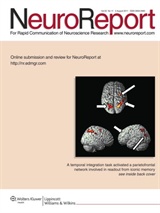 NeuroReport (IF:1.200/2020)
NeuroReport (IF:1.200/2020)
A. Saneyoshi, R. Niimi, T. Suetsugu, T. Kaminaga, & K. Yokosawa (2011). Iconic memory and parietofrontal network: fMRI study using temporal integration, NeuroReport, 22, 11, 515-519.
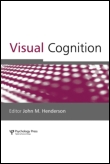 Visual
Cognition (IF:1.050/2020)
Visual
Cognition (IF:1.050/2020)
R. Nakashima & K. Yokosawa (2018). To see dynamic change: Continuous focused attention facilitates change detection, but the effect persists briefly, Visual Cognition, 26, 1, 37-47.
M. Asno & K. Yokosawa (2013). Determinants of synaesthetic colours for different types of graphemes: Towards a comprehensive model, Visual Cognition, 21, 6, 674-678.
R. Nakashima & K. Yokosawa (2012). Sustained attention can create an (illusory) experience of seeing dynamic change, Visual Cognition, 20, 3, 265-283.
A. Ariga, K. Yokosawa, & H. Ogawa (2007). Object-based attentional selection and awareness of objects. Visual Cognition, 15, 6, 685-709.
Y. Hibi & K. Yokosawa (2007). On the Relation Between Object and Action: Response Consistency and Stimulus-Response Compatibility. Visual Cognition, 15, 3, 349-380.
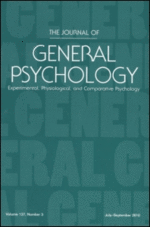 Journal of General Psychology (IF:0.890/2020)
Journal of General Psychology (IF:0.890/2020)
M. Asano & K. Yokosawa (2011a). Rapid extraction of gist from visual text and its influence on word recognition, Journal of General Psychology, 138, 2, 127-154.
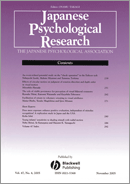 Japanese
Psychological Research (IF:0.830/2020)
Japanese
Psychological Research (IF:0.830/2020)
R. Niimi, H. Shimada, & K. Yokosawa (2017). Inhibition of Return Decays Rapidly When Familiar Objects Are Used. Japanese Psychological Research, 59, 2, 167-177.
R. Niimi, K. Watanabe, & K. Yokosawa (2005). The role of visible persistence for perception of visual bilateral symmetry. Japanese Psychological Research, 47, 4, 262-270.
K. Yokosawa & T. Kumada (2003). Voluntary Aspects of Attentional Control Setting for Detecting A Feature-Defined Target. Japanese Psychological Research, 45, 1, 1-14.
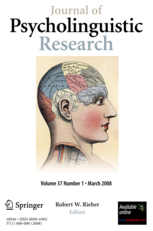 Journal
of Psycholinguistic Research (IF:0.700/2020)
Journal
of Psycholinguistic Research (IF:0.700/2020)
K. Tamaoka, M. Asano, Y. Miyaoka, & K. Yokosawa (2014). Pre- and post-head processing for single- and double-scrambled sentences of a head-final language by the eye tracking method, Journal of Psycholinguistic Research, 43, 2, 167-185.
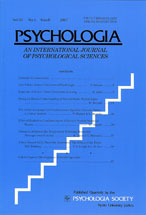 Psychologia (IF:0.080/2020)
Psychologia (IF:0.080/2020)
M. Asano, S. Kanaya, & K. Yokosawa (2008). Proofreaders show a generalized ability to allocate spatial attention to detect changes. Psychologia, 51, 2, 126-141.
D. Mine, S. Kimoto, & K. Yokosawa (2021). Obstacles affect perceptions of egocentric distances in virtual environments. Frontiers in Virtual Reality.
熊倉、信田、浅野、横澤 (2019). 文化的な構えが色嗜好に与える影響, 基礎心理学研究, 38, 1, 26-32.
金谷、石渡、横澤 (2011). 自己による触刺激がラバーハンド錯覚に与える影響、基礎心理学研究, 30, 1, 11-18. (本論文に対して日本基礎心理会から、 が 授与されました。)
実吉、新美、末續、神長、横澤 (2009). 視覚的短期記憶における視覚情報の時間的統合に関わる神経基盤の検討、基礎心理学研究, 28, 1, 23-34.
浅野、横澤 (2007). 校正専門家の高次視覚特性に関する検討、基礎心理学研究, 26, 1, 29-37. (本論文に対して日本基礎心理会から、 が 授与されました。)
竹井、竹内、横澤 (2003). 中心視野と周辺視野における特徴探索、基礎心理学研究, 21, 2, 112-119.
宇野、浅野、横澤 (2019), 漢字の形態情報が共感覚色の数に与える影響, 心 理学研究, 89, 6, 571-579.(本論文に対して日本心理学会から、 が授与されまし た。)
中島、横澤 (2018). 視覚的注意の時空間的維持による変化検出の促進、心 理学研究, 89, 5, 527-532.
中島、横澤 (2015). 画像シフトによる変化の見落としにおける持続的注意の役割、心 理学研究, 85, 6, 603-608.
中島、横澤(2010). フリッカー変化時における自然情景の視覚表象、心 理学研究, 81, 3, 210-217.
江良、横澤(2009). 触覚的角度判断に対する視覚手がかり効果、心 理学研究, 80, 3, 232-237.
竹内、竹井、横澤 (2004). 視覚的注意による信号増幅の時間特性、心 理学研究, 75, 3, 229-237.
尾関、横澤 (2003). 変化検出課題における視覚的短期記憶の性質、心 理学研究, 73, 6, 464-471.
西村、横澤 (2014). 刺激反応適合性効果からみた左右と上下の空間表象、心理学評論, 57, 2, 235-257.
西村、横澤 (2012). 空間的刺激反応適合性効果、心理学評論, 55, 4, 436-458.
新美、横澤 (2007). 対称性の視知覚とその役割、心理学評論 , 50, 2, 119-134.
光松、横澤 (2004). 観察条件の変化における物体認知の不変性、心理学評論, 47, 2, 241-256.
菅沼、横澤 (2003). 視覚的注意とオブジェクト性、心理学評論, 46, 3, 527-542.
横澤、大谷 (2003). 見落とし現象における表象と注意 ー非注意による見落としと変化の見落としー、心理学評論, 46, 3, 482-500.
正田、黒田、横澤 (2015). マジック状況における人間の顔や視線方向への偏重注視、認知心理学研究, 12, 2, 69-76.
永井、横澤 (2006). 視覚物体認知における色の役割−色識別性とカテゴリーの影響−、認知心理学研究, 3, 2, 181-192.
永井、横澤、浅野 (2019). 非共感覚者が示すかな文字と色の対応付けとその規則性, 認 知科学, 26, 4, 426-439.
横澤 (2014). 統合的認知、認知 科学, 21, 3, 295-303.
永井、横澤 (2003). 視覚物体認知における上位概念と表面特徴の影響、認知科学, 10, 1, 145-159. (本論文に対して日本認知科学会から、 が授与されま した。)
浅野、横澤 (2014). 色字共感覚:文字認知と色認知の隠れた結びつき、ヒューマンインタフェース学会誌, 16, 4, 265-268.
横澤、金谷 (2012). 顔と音声の感覚融合としての腹話術効果, BRAIN and NERVE, 64, 7, 771-777.
横澤 (2021). 共感覚, 脳神経内科, 95, 2, 195-201.
大野、横澤、鳴海 (2022). 多感覚の統合的認知の基礎と感覚提示インタフェースへの応用可能性, 日本バーチャルリアリティ学会論文誌. 27, 1, 18-28.



